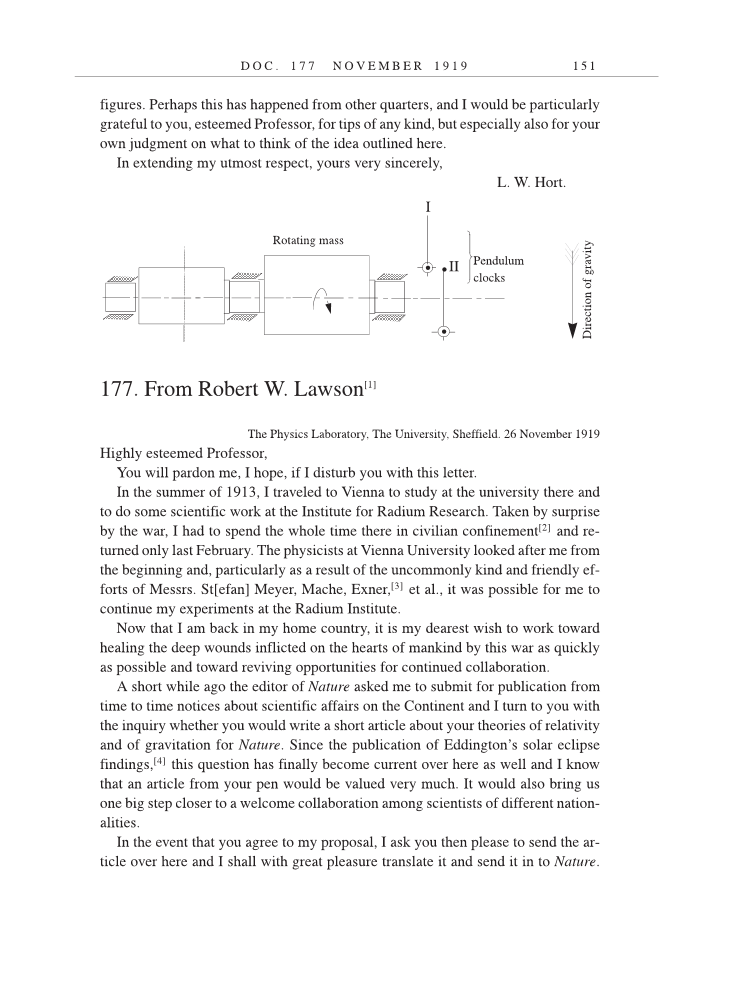D O C . 1 7 7 N O V E M B E R 1 9 1 9 1 5 1 figures. Perhaps this has happened from other quarters, and I would be particularly grateful to you, esteemed Professor, for tips of any kind, but especially also for your own judgment on what to think of the idea outlined here. In extending my utmost respect, yours very sincerely, L. W. Hort. 177. From Robert W. Lawson[1] The Physics Laboratory, The University, Sheffield. 26 November 1919 Highly esteemed Professor, You will pardon me, I hope, if I disturb you with this letter. In the summer of 1913, I traveled to Vienna to study at the university there and to do some scientific work at the Institute for Radium Research. Taken by surprise by the war, I had to spend the whole time there in civilian confinement[2] and re- turned only last February. The physicists at Vienna University looked after me from the beginning and, particularly as a result of the uncommonly kind and friendly ef- forts of Messrs. St[efan] Meyer, Mache, Exner,[3] et al., it was possible for me to continue my experiments at the Radium Institute. Now that I am back in my home country, it is my dearest wish to work toward healing the deep wounds inflicted on the hearts of mankind by this war as quickly as possible and toward reviving opportunities for continued collaboration. A short while ago the editor of Nature asked me to submit for publication from time to time notices about scientific affairs on the Continent and I turn to you with the inquiry whether you would write a short article about your theories of relativity and of gravitation for Nature. Since the publication of Eddington’s solar eclipse findings,[4] this question has finally become current over here as well and I know that an article from your pen would be valued very much. It would also bring us one big step closer to a welcome collaboration among scientists of different nation- alities. In the event that you agree to my proposal, I ask you then please to send the ar- ticle over here and I shall with great pleasure translate it and send it in to Nature. I Direction of gravity • • Pendulum •II Rotating mass clocks
